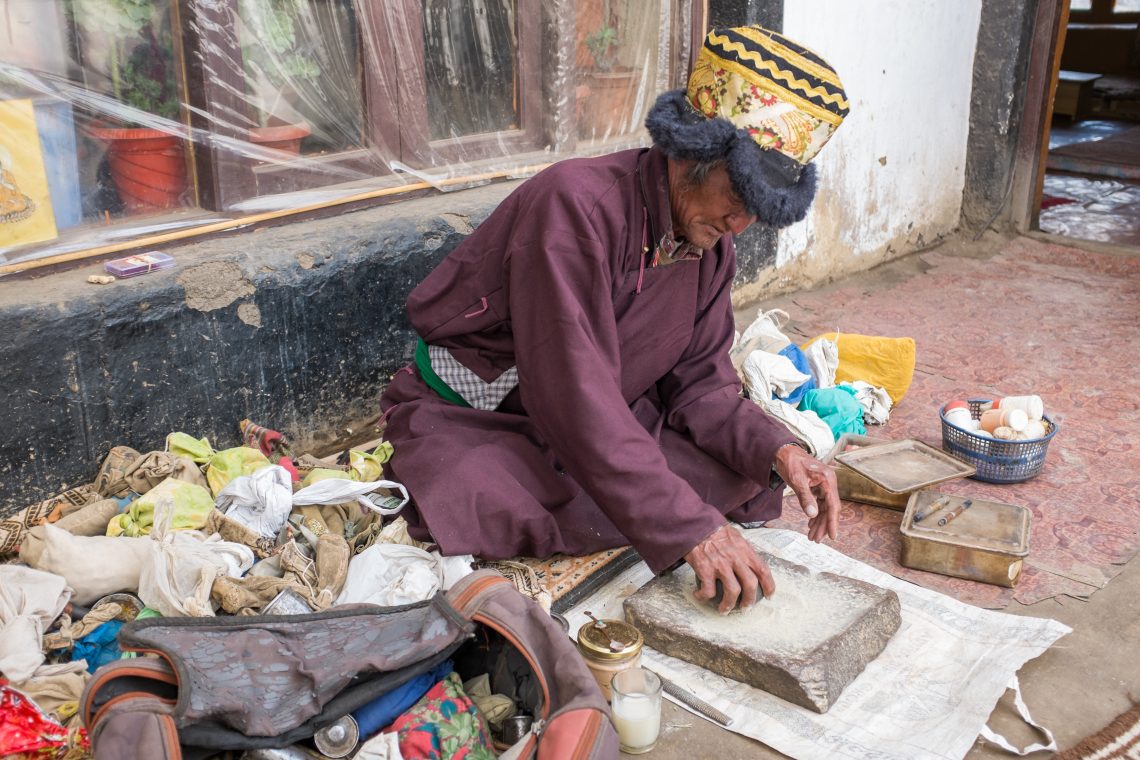
Why the People of Spiti Eat Stones
One of the few remaining amchis of Spiti Valley sheds light on the challenges of his practice and the miracle stones still used as a treatment
Story by: Chhering Norbu
Read the original version of this story in Hindi
The word “Amchi” means mother of all living beings. As part of a centuries-long lineage, my family has been using Sowa Rigpa (traditional Tibetan medicine) as a method of treatment and well-being, and we have preserved this knowledge.
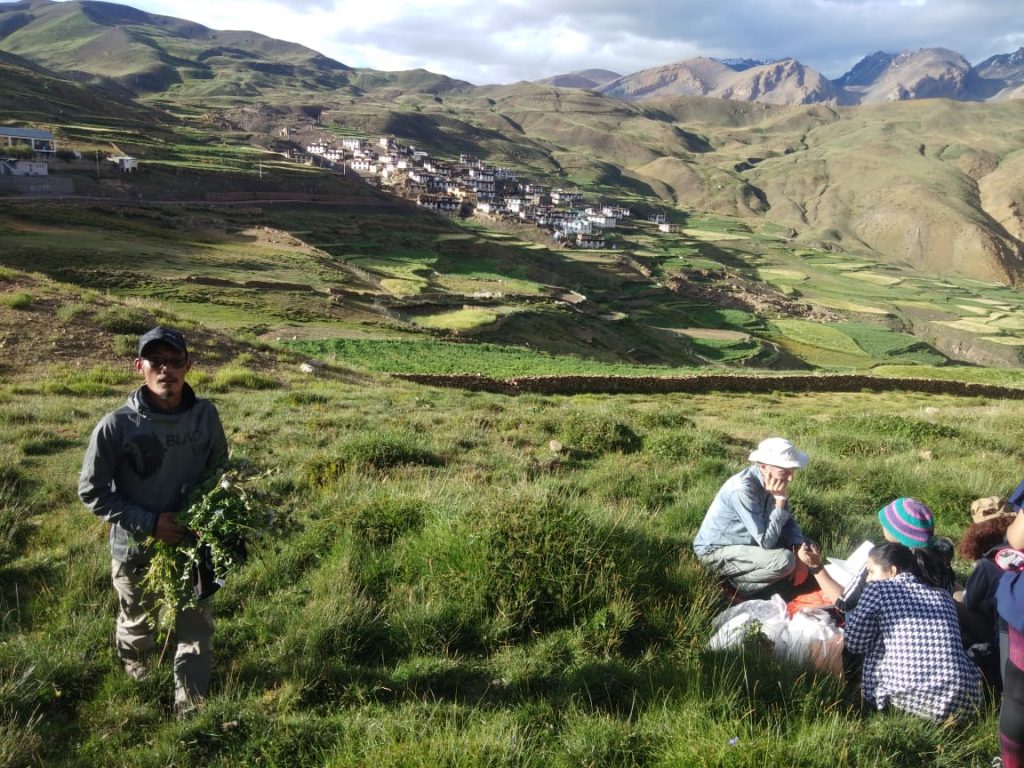
In my time as an Amchi, I have seen many new illnesses like peptic ulcer, kidney stones, hypertension etc – which were not prevalent or diagnosed earlier in Spiti Valley – cured by local herbs and plants. I have also seen an increase in common health conditions like acidity and gastric and digestive ailments. These are primarily caused by excessive alcohol consumption, overeating, high amounts of spice in food, and consumption of deep-fried dishes.
In our practice, these conditions can be cured by a special stone called Chug Jhi (Cong Zi – Coloitum) that is commonly found across most regions of Spiti. This stone is shiny, and usually white in color. Two varieties of this stone are found in my high-altitude village of Demul. These two varieties are addressed as Pho Chong (male) and Mong Chong (female), but when it comes to treatment, the male stone is used to treat female patients and vice versa.
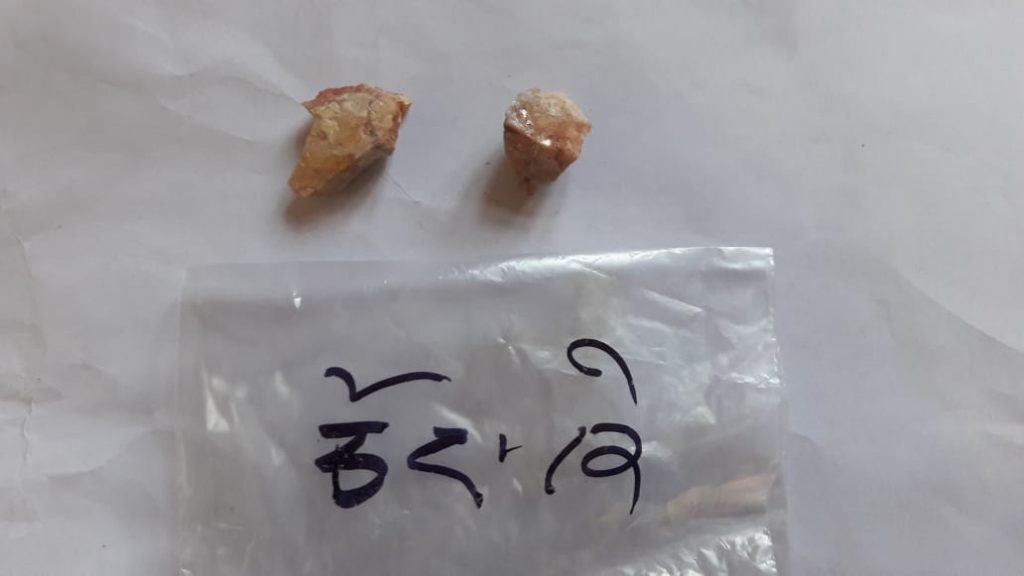
This stone is pounded by hand into a fine powder, and people consume 1/4th teaspoon twice a day for two weeks. This treatment is so effective for acidity that locals as well as people from other areas prefer it to newer methods of treatment. People get relief after consuming it for two weeks, and the best part is that there are no side effects.
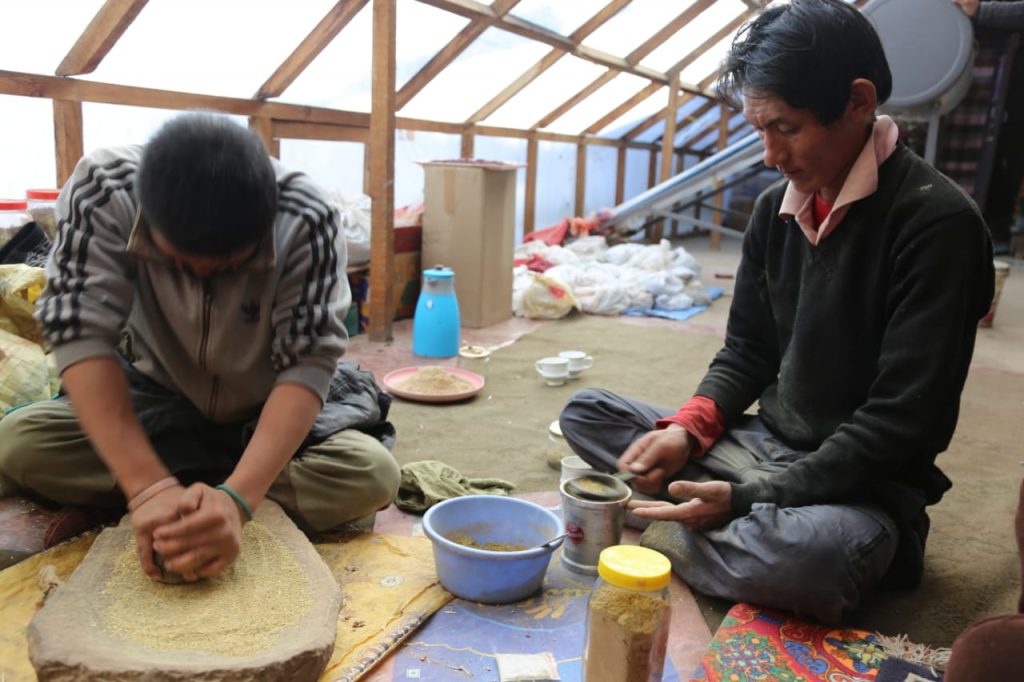
The stone has many special properties, and it is also combined with other herbs to make powders to treat various ailments such as peptic ulcers, epigastric burning pains, gastrointestinal swellings, indigestion, dyspepsia etc. These have proven to be so effective that people make and consume their own formulation. In addition to the Chug Jhi stone, Spiti is home to many indigenous plants and herbs that may be considered Sanjeevani herbs (the lifesaving herb mentioned in mythology) of our age!
The people of Spiti have sought treatment from Amchis since ancient times when no modern medicine was accessible here. Natural medicine has cured diseases in these communities. Hence, they have greater trust in this system of medicine than in any other.
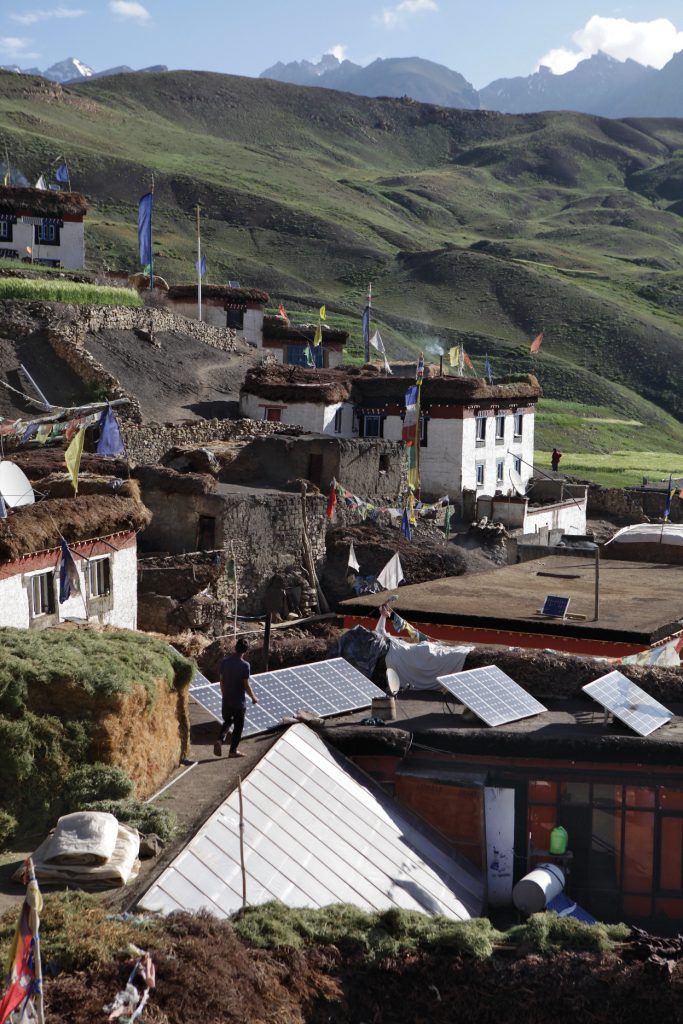
If you were to learn this practice at an educational institution, it would take you five years. However, I learned the Bhoti language script from my father and grandfather. Then I studied Gyud-Zi, the foundational four-part textbook of Sowa Rigpa, and Ashtanga Hridaya, the ancient root texts of Ayurveda. I took the oral and written examinations, and consulted patients under the supervision of the Amchi from the neighboring village. It has been a life-long learning since my childhood, and after I cleared that stage, I was able to pursue advanced studies.
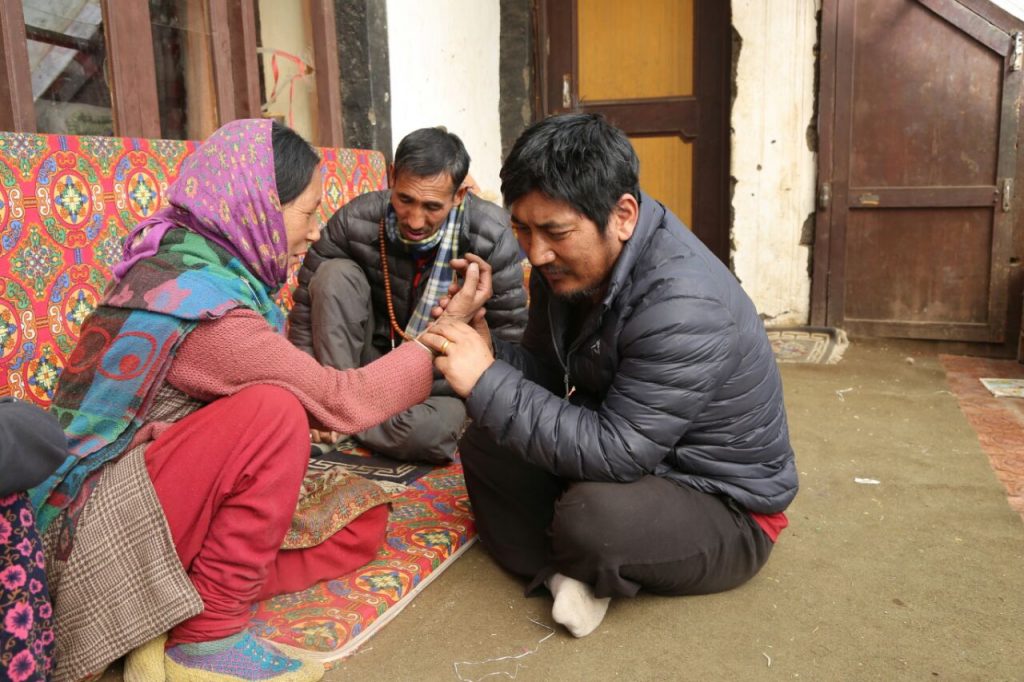
After meditating with my father in our home temple and at Rewalsar, we meditated together in the village cave, on the Medicine Buddha and other deities. This meditation enabled us to tap into invisible energies which can help with healing.
In our Buddhist tradition, we take a vow on the eighth of every month, as it is considered the day for health and medicine. On this day, Amchis chant mantras for all living beings to lead happy lives, stay free from illnesses and their overall well-being. Since 2011, I have been serving the local community in Spiti with an aim to eliminate their health issues.
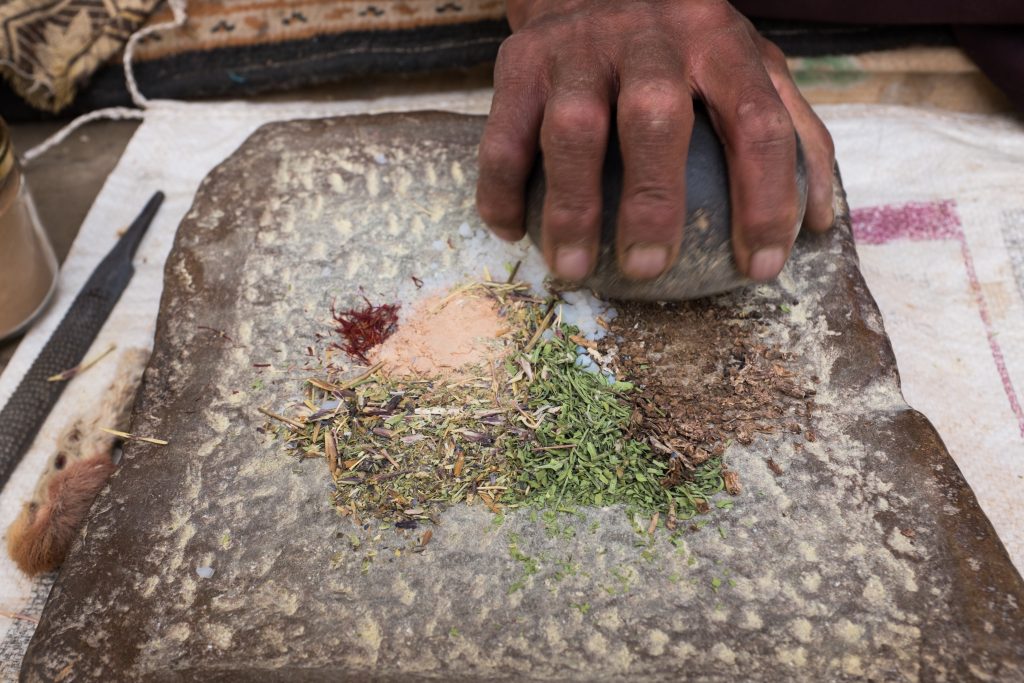
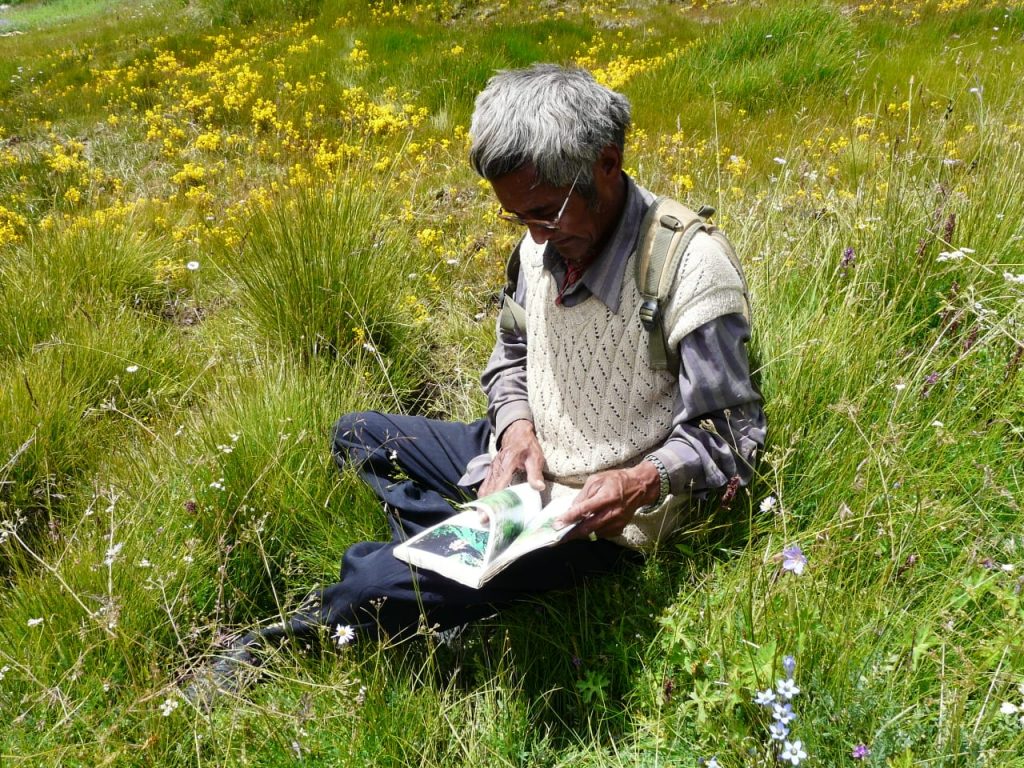
Today, the entire world is embracing organic farming, natural herbs and yoga. Traditional customs, ways of life, diets and cultural practices are gaining in popularity. However, the local Amchi is facing challenges in today’s modern era. Because the practice is not an actual source of income, they are unable to devote time to it, and rising costs mean that they are unable to buy herbs and medicinal ingredients. In earlier decades, there were 24-25 Amchis in Spiti, but presently, only 8-10 practising Amchis still remain.
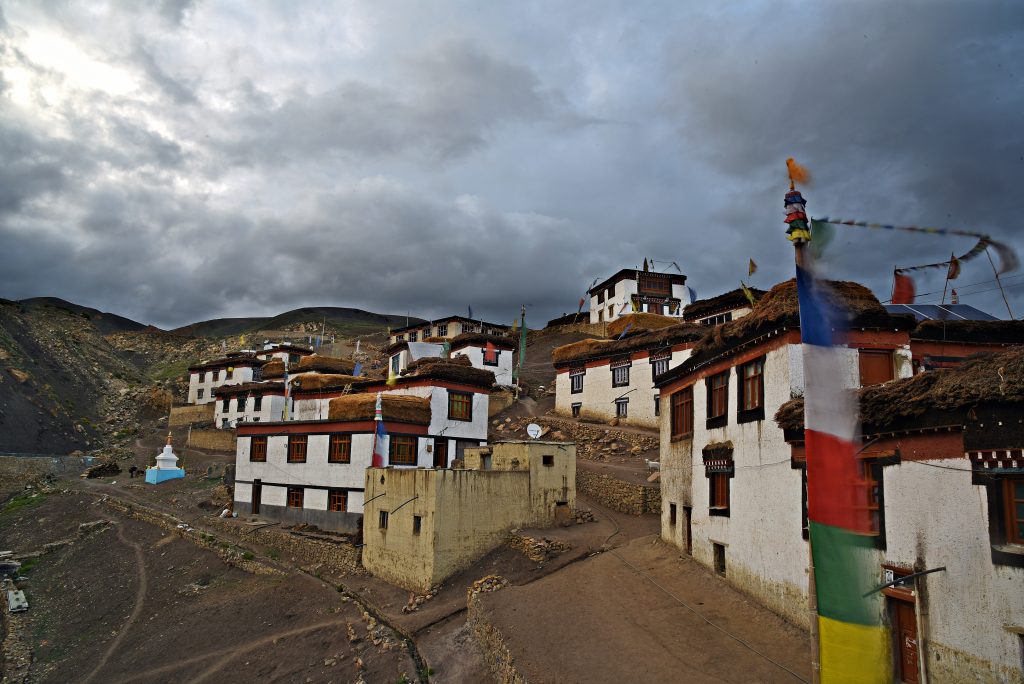
In today’s modern age, people around India and the rest of the world are adopting Ayurveda and Sowa Rigpa with much enthusiasm. This is a positive development, but the medical industry and treatment centres are employing workers to extract herbs from the Himalayas in great quantities, causing many local varieties to become extinct.
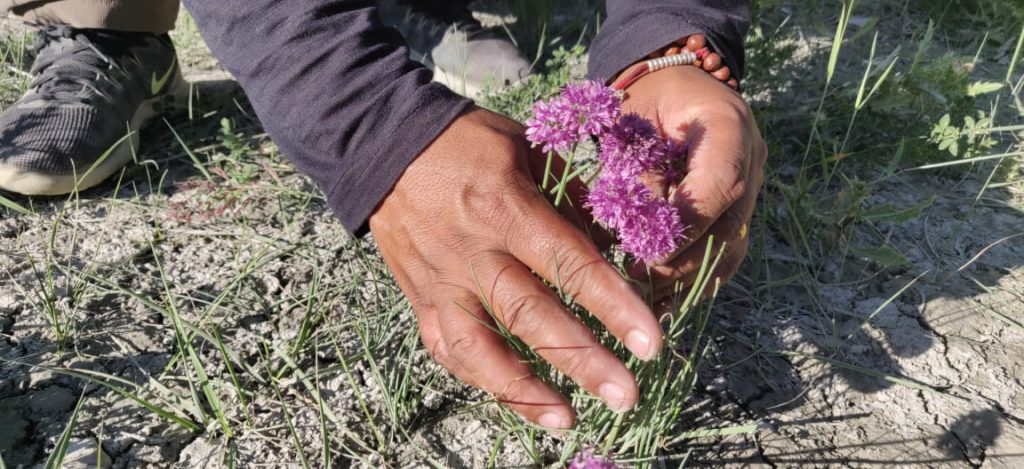
In my opinion, the Ministry of AYUSH needs to inspire and enable Amchis to create herb nurseries so that the disappearing plants may be brought back into existence. I hope that they will show confidence in the abilities of lineage Amchis (both Tibetan and Indian, based in the Himalayan region of India) who have kept traditional medicine alive and continue to serve their communities.
Only then can our ancient wisdom be preserved, and natural treatments, like those that use special stones, be kept alive.
Meet the storyteller






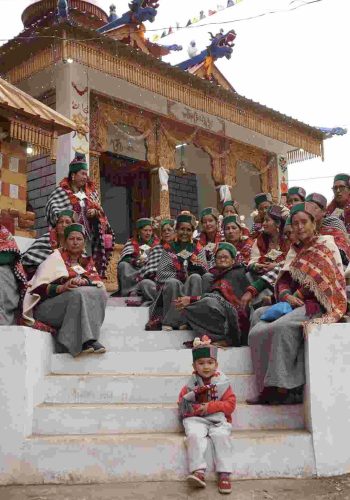

Jullay! Wonderful article Norbu Aacho. I am Mridul from Shimla and I am currently pursuing PhD from IIT Delhi in Sociology. My work is around Compassion and Sowa Rigpa.
I have heard a lot about you in Spiti. I stayed last year in Key. Hope to meet you soon and work together in bringing positive changes towards Sowa Rigpa, other such challanges you have mentioned. Through my doctoral thesis I want to gain an insight and then work towards saving precious herbs and practises. Hope to meet you when my field work begins( post covid)
Thankyou for a wonderful article.
Regards
Mridul
This is a testimony to the fact that ancient methods are the best for the body and the nature too.
Loved reading the article.
Thank you for giving us a precious glimpse into your community’s life, Mr Chhering Norbu. Indeed, it is wonderful that nature-based remedies are coming back into the spotlight. I deeply hope you are able to preserve and pass on your timeless knowledge!